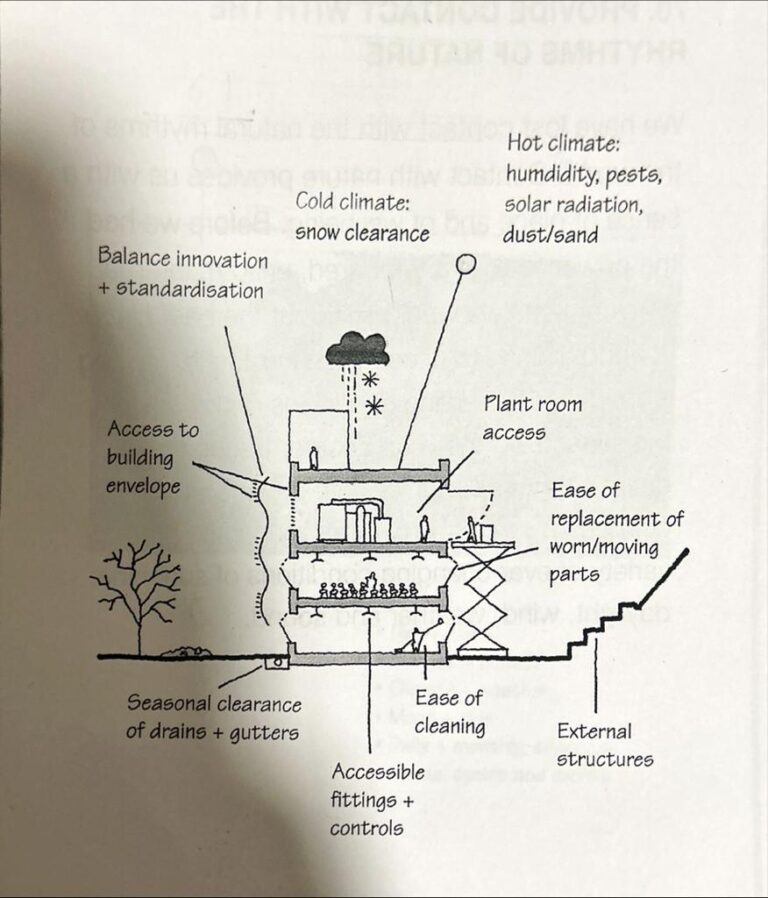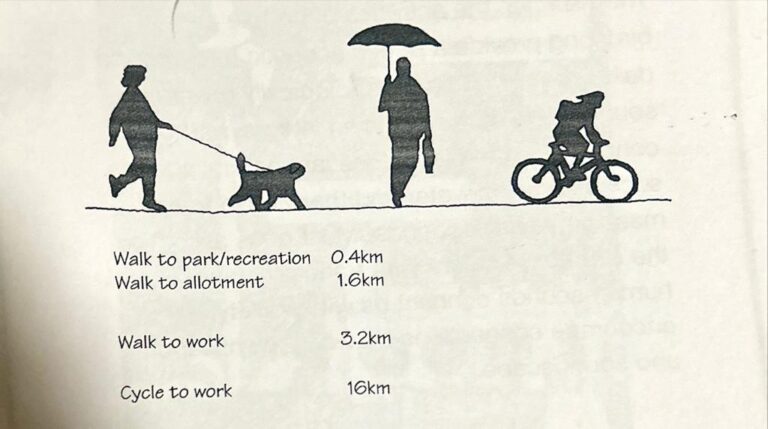Urban design & well-being
Building construction and its operation affects the health and well- being of people in many ways. Green building practices and measures should be integrated into the design process to ensure the health and well-being of the occupants.

fig 1 : Urban Health
Historian Roy Porter wrote , ‘ when buildings take precedence over people , we get heritage, not history’. A sustainable city exists for its citizens and will successfully combine the new and the old, maintaining vitality , linking the present and future with the past in a meaningful way. The built heritage of the city should be part of an ever-developing collage, requiring contemporary judgments about those aspects of history we wish to retain, and how.
An organisation staff bill might be 100 times its energy bill annually . So even if it is energy efficient , a ‘ sick building ‘, which is unpleasant and unhealthy to work in , causes a loss of staff productivity and high turnover, and so is very costly to operate . These are measures of an unsustainable building . Consideration of both internal and external environmental conditions is essential in the making of healthy building in which people will want to work .
-
IF ITS NOT MAINTAINABLE ITS NOT SUSTAINABLE
Poorly maintained building will fail, wasting resources (materials, energy, water) and damaging the environments. A low- maintenance future must be designed-in from the start of a project, and might require innovation in external structure. Compare options for the initial-versus- operating costs of components, services and materials, remembering that design innovation bring both risks and rewards. Establish a regular cycle for safe, environmentally conscious maintenance and cleaning , inside and outside , with locally sourced materials , parts and contractors, while ensuring the building remains occupied throughout. Design damp and decay-resistant, ventilated construction , appropriate for your climate region .

fig 2: Regular cycle
-
The Active city is a Healthy city
There is a link between active urban living and quality of human health. In many modern, mono-centric, car-dependent cities, ready access to safe opportunities for daily physical activity are limited . Even as the provide compact and dense urban living/working environments, cities must support opportunities for regular physical activity for all of society .People will use their feet if the public realm is attractive : design opportunities for walking and cycling , exercising and sport, gardening and urban farming.

fig 3: Activity for all of society.
-
There Audible city is a Stimulation city
There is a great variety of exciting and inspiring sounds in our cities, If we wish to hear them. The weather, the activates of people and birdsong provide a poetic acoustic backdrop to daily urban life. The psychologically rewarding soundscape of the city is an integral part of our connection with place . Pleasant natural sounds such as moving water and wind in trees mask unpleasant sounds. Most of us associate the sounds of nature with tranquillity , and human sound connect us with society ; encourage connections between townscape and soundscape.
-
The Green city is a Healthy city
Green spaces are known to be good for city dwellers mental health and well being, Urban green spaces can take many forms, from the large- scale can take many forms, from the large-scale urban forest to the pocket park. They not only provide for recreation and exercise; urban tress, by absorbing CO2 and other gaseous pollutants, reduce the UHI effect and improve air quality .Parks along urban watercourses can improve water quality, and urban greening absorbs 85% of damaging UV radiation. Green spaces have a lower temperature than their surrounding : air cooled by them provide a cooling effects into city .

fig 4:Forest pocket
Green is the easiest colour for humans to view, due to its position in the spectrum and the anatomy of the human eye. So green is a restful colour, making it an essential antidote to our hectic lives. Provide green landscaped spaces, no matter how small , to provide relief from the noise and pollution of our frenetic cities.

Fig 5: Urban Greenspace
Equity , one of three pillars of sustainability , is in short supply in our cities: they are becoming more unequal, not less. Every citizen should be able to participate fully in all that the city has to offer, under determined city leadership that seeks fairness in justice, food, shelter, health, education , the environment and opportunity for all . People’s voices must be heard and respected from the outset if urban development is to be sustainable. The city, its democratic institution and its built form must be inclusive , accessible to everyone in a humane society.

fig 6: City belongs to all .









Thank you for providing this interesting blog, discussing the ways in which urban design can have a positive effect on our well-being. I particularly enjoyed the explanation of the link between accessible green space and improved mental health. To expand on your points, urban design can also be a useful tool in helping to combat loneliness, which is a leading cause of poor mental health in the older generation (World Health Organisation, 2023).
‘By 2023, one in six people in the world will be aged 60 years or over. Loneliness and social isolation are key risk factors for mental health conditions in later life’ (World Health Organization, 2023).
In Jan Gehl’s text Life Between Buildings, his philosophies are underpinned by the belief that people need and want human contact. He argues that good quality public space will increase social interaction on all levels and therefore enhance general quality of life. If good quality public space is provided, more optional activities will take place outdoors as well as necessary ones. Not only is the incidence of seeing someone you know increased, but it also provides for a more intricate ‘street ballet’ (Jacobs, 1961) and adds further interest to the street or space. Gehl also sees value in the low intensity ‘passive contacts’, where the interaction is simply seeing or hearing another person as this can be a source of inspiration, information or a starting point for other levels of contact.
Other factors that have been found to reduce the feeling of loneliness include walkable neighbourhoods and access to community spaces, green space and public transport (Avery, 2023).
Bibliography:
Avery, E (2023). Should we design cities for loneliness? Available at: https://happycities.com/blog/should-we-design-cities-for-loneliness (Accessed: 08.01.24)
Gehl, J (1987). Life Between Buildings: Using Public Space. Copenhagen: Island Press
Jacobs, J (1961). The Death and Life of Great American Cities. New York: Random House
World Health Organisation (2023). Mental Health of Older Adults. Available at: https://www.who.int/news-room/fact-sheets/detail/mental-health-of-older-adults#:~:text=Loneliness%20and%20social%20isolation%20are,live%20with%20a%20mental%20disorder. (Accessed: 08.01.24)